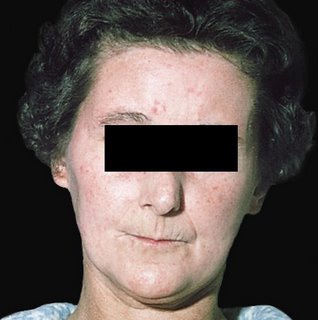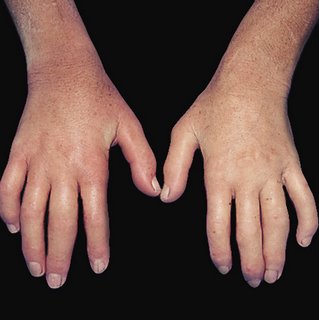Scleroderma
My friend recently went for a mock exam for PACES. During the mock, he was asked to examine a pair of hands that was not mentioned in my blog.
Scleroderma is a common short case in locomotor station. You are asked to examine the hands. Check for the characteristic skin features in the hands.
1. Thickening and tightening of the skin. It looks shinny.
2. Subcutaneous calcification over the finger tips or the extensor aspects of forearms or elbows.
3. Ulcerations over the bony eminences.
4. Areas of hypo- or hyper-pigmentations.
5. Look for polyarthropathy that may mimic RA. Assess the function of the hands.

Then, look at the face for microstomia, matted telangiectases over cheeks and lip margins.
If allowed to take history, ask about Raynaud's phenomenon and dysphagia.
What is the systemic complications?
Scleroderma is a common short case in locomotor station. You are asked to examine the hands. Check for the characteristic skin features in the hands.
1. Thickening and tightening of the skin. It looks shinny.
2. Subcutaneous calcification over the finger tips or the extensor aspects of forearms or elbows.
3. Ulcerations over the bony eminences.
4. Areas of hypo- or hyper-pigmentations.
5. Look for polyarthropathy that may mimic RA. Assess the function of the hands.

Then, look at the face for microstomia, matted telangiectases over cheeks and lip margins.
If allowed to take history, ask about Raynaud's phenomenon and dysphagia.
What is the systemic complications?










3 Comments:
ACE inhibitor for renal crisis
And penicillamin for pulm fibrosis
Don't forget about pericardial effusion (raised JVP, low pulse volume +- ascites) if examiner asks for cvs complication
how does one differentiate between limited cutaneous from diffise scleroderma??
Post a Comment
<< Home